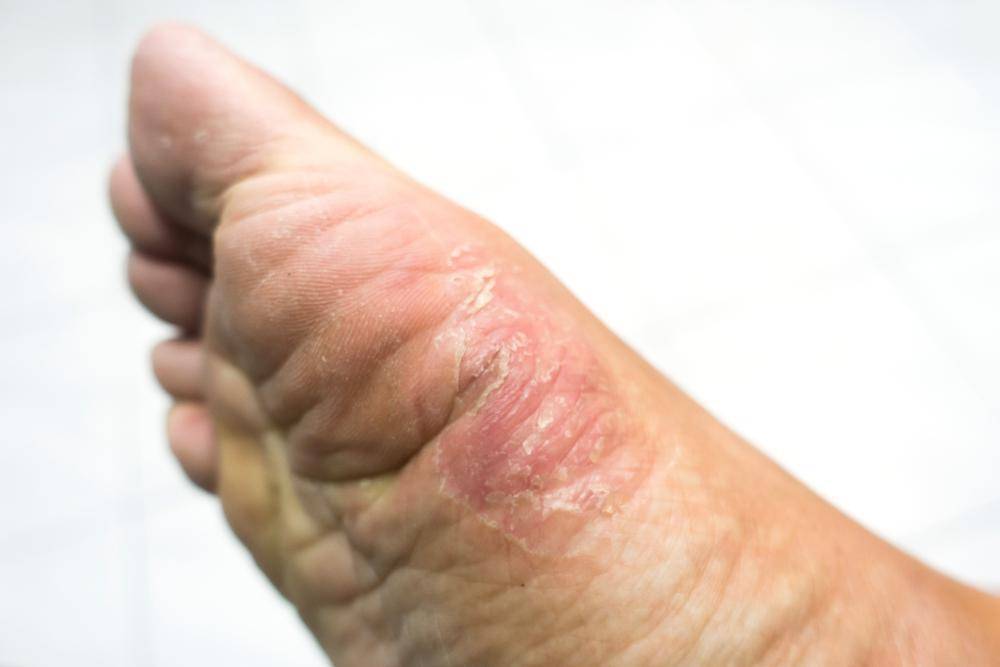Athlete's foot, also known as tinea pedis, is a fungal infection that primarily affects the feet. It is caused by various species of fungi, particularly those belonging to the dermatophyte group. While vitamin deficiencies can weaken the immune system and make individuals more susceptible to infections, there is no specific vitamin deficiency that directly causes athlete's foot. The development of athlete's foot is primarily attributed to factors such as moisture, warmth, poor foot hygiene, and prolonged contact with the fungi responsible for the infection.
Vitamins play essential roles in maintaining overall health and supporting the immune system, which helps protect the body from infections. However, a specific vitamin deficiency has not been identified as a direct cause of athlete's foot. Instead, the development of this condition is primarily influenced by the following factors:
Fungal Exposure: Athlete's foot is typically caused by fungi that thrive in warm, moist environments like public showers, locker rooms, and swimming pools. These fungi, such as Trichophyton and Epidermophyton, can easily be contracted when walking barefoot in these communal areas or by using contaminated items like towels or socks.
Warm and moist conditions: the fungi responsible for athlete's foot tend to thrive in warm and moist environments. Excessive sweating, tight-fitting shoes, and prolonged wearing of damp socks can create an ideal environment for fungal growth. Moisture helps fungi multiply, invade the skin, and cause infection.
Weakened Immune System: While there is no specific vitamin deficiency directly linked to athlete's foot, a weakened immune system can increase the risk of fungal infections. Adequate vitamin intake, particularly vitamins A, C, D, and E, is crucial for maintaining a healthy immune system. A deficiency in these vitamins could potentially compromise the body's ability to fight off fungus infections effectively.
Poor Foot Hygiene: Insufficient foot hygiene practices can contribute to the development of athlete's foot. Failing to keep the feet clean and dry, neglecting to change socks regularly, and not allowing shoes to fully dry out between uses can create an environment where fungi can thrive.
To prevent athlete's foot, it is important to practice good foot hygiene and take preventive measures such as:
Keep Feet Clean and Dry: Wash your feet daily with soap and water, ensuring that you dry them thoroughly, especially between the toes.
Use appropriate footwear: wear shoes that allow your feet to breathe, and opt for moisture-wicking socks to keep your feet dry. Avoid tight-fitting shoes that can create a warm and damp environment.
Protect Feet in Public Areas: Wear flip-flops or sandals in public showers, locker rooms, and around swimming pools to minimize the risk of fungal exposure.
Change Socks and Shoes Regularly: Regularly change your socks, especially if your feet tend to sweat excessively. Allow shoes to dry completely between uses to prevent fungal growth.
Avoid Sharing Personal Items: Refrain from sharing towels, socks, shoes, or any other personal items that may harbor fungal spores.
While maintaining adequate vitamin levels is important for overall health, there is no specific vitamin deficiency that directly causes athlete's foot. By practicing good foot hygiene, wearing appropriate footwear, and taking preventive measures, you can significantly reduce your risk of developing this common fungal infection. If you suspect you have athlete's foot or any other foot condition, it is recommended to consult a healthcare professional for an accurate diagnosis and appropriate treatment.


